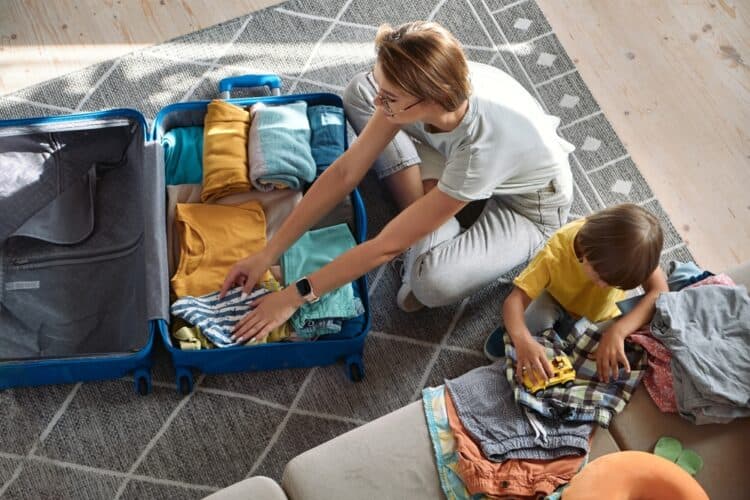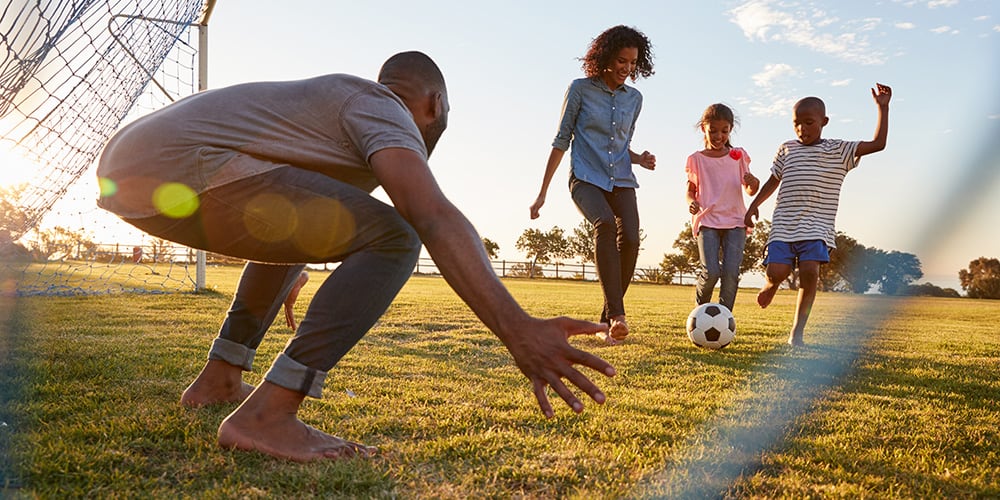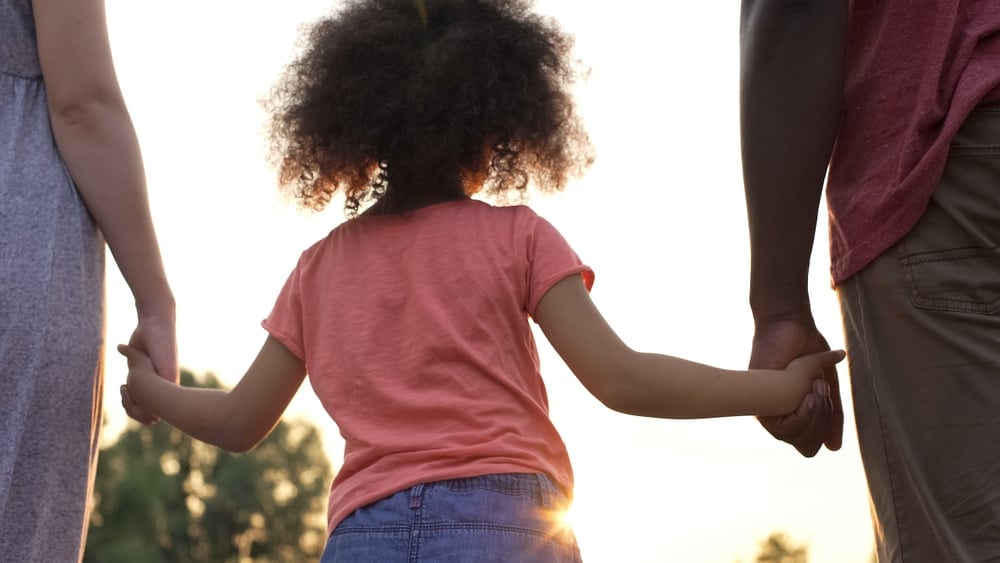Co-parenting transition times, when children go from spending time with one parent or guardian to another, brings with it a range of challenges and emotions for everyone involved.
Whether co-parenting looks like two homes and sharing time with children, or birdnesting with one home and trading parenting time, or visitation from one adult to another, the emotions and decisions that come with the transition time can feel overwhelming, exhausting, and confusing for both adults and children, but it doesn’t always have to be or feel that way.
I have been divorced and co-parenting my children with two separate homes for more than 10 years now, and in that time, my kids have grown from the ages of 3 and 5 to now thriving teens. My kids still bounce back and forth from each of our homes, but what used to often feel chaotic, lonely, and sad, now feels more consistent, secure, nurturing, and balanced. As I reflect on all of these years of co-parenting, there are some standout self-care tools, communication practices, co-parenting agreements, and mindset hacks that I have learned along the way (that I wish I would have known sooner) that have helped both myself and my children better navigate the emotions of co-parenting transition.
Avoid ‘parentification’ during transition and let kids be kids
It took me a long time, maybe even years, to realize that while I was worried about my children’s emotions and feelings when they were not with me, they were also thinking about mine. When I would call them, or see them, and tell them repeatedly how much I missed them and was thinking about them, I was unfairly and unwarily making them feel responsible for how I felt. It wasn’t until my youngest asked me, “Mom, did you just miss me and feel lonely the whole time that I was with dad?” that I realized the importance of letting them into my world by sharing how I chose to positively spend my time when they were not physically with me.
In an article written by Virginia Pelley on Fatherly.com, she said, “Children are naturally empathetic, so it’s easy for parents to cross the line unintentionally into ‘parentification:’ the act of placing children in situations where they feel more like parents than children.” I have learned that kids are happy when they know that you are happy, and when I opened up about catching up with a friend, working on a project, or doing an activity that I loved, I could feel their sense of relief and were able to be more present with their own time. Kids, just able to be kids.
Making a plan for yourself can ease the stress of transition
Creating a plan that you look forward to when your kids go to their co-parents’ house can help ease the emotions of home transition.
Days as a single parent can be chaotic, there is just no other way to describe it. I remember the many times of being completely exhausted at the end of the day and looking forward to when my kids could go spend time with their dad, and then the moment that they left, breaking down in tears with the “empty house blues.”
When I started to make a mindful plan for when my kids left, something that I personally looked forward to and could be present with, I felt my energy shift sooner.
In Mindful.com, mindfulness and yoga teacher (and recently divorced) Susan Verde said, “If you’re not looking after yourself, there’s no way that you can take care of your kids. Practicing little self-care rituals can really help to let go of self-destructive feelings of failure and those of self-blame.”
I found (and still do) that having a plan to indulge in an activity, like meditating or taking an extra-long shower and resting, something that is more difficult to engage in when the kids are around is uplifting, mood-shifting, and healing. Also, once I had this plan in place and was looking forward to it, I was more at ease and less stressed with the transition, which I know my children benefit from as well.

Narrative expressive writing created an emotional release
Divorce and relationship transitioning seems to touch on all of the feelings. The pendulum swings from frustration, exhaustion, confusion, to even hopefulness and exhilaration at times, just to name a few.
I personally learned to balance and release my feelings around my divorce through writing. I even named my journal the “Divorce Chronicles,” where I openly penned everything I felt, but in narrative, story-telling style. It often brought me to tears and at times I laughed out loud. By releasing what I felt on paper, I was able to work through the heavy feelings and navigate my way to a more grounded (and sometimes humorous) mindset.
I recently read a study published by the “Psychosomatic Medicine: Journal of Biobehavioral Medicine” titled “Impact of Narrative Expressive Writing on Heart Rate, Heart Rate Variability, and Blood Pressure After Marital Separation” by Kyle Bourassa and colleagues at the University of Arizona. This research helped me understand why scientifically this style of writing was so effective for me. The research found that, “A specific style of journal writing called “narrative expressive writing” helped reduce the harmful cardiovascular effects of going through a divorce.”
In a statement about this research on Psychology.com, Bourassa described the findings: “The results suggest that the ability to create a structured narrative – not just re-experiencing emotions but making meaning out of them – allows people to process their feelings in a more adaptive way, which may in turn help improve their cardiovascular health.”
By releasing what I was feeling on paper, it helped me make sense of my emotions and I was able to show up for myself, and for my children, with a clear mindset and without having to vent all of it and spill it onto others (my friends thank me for that).

Set boundaries for phone calls and Facetimes
I learned the importance of having a consistent time to call and connect with my kids when they were with my co-parent the hard way. Because I was constantly thinking about my children and wanting to know what they were up to and how they were feeling, I would reach out and try to connect whenever I felt like it. However, I got the message from my kids that I was overdoing it with phone calls and Facetimes, so when I scaled back and we agreed to connect before bedtime, I was able to relax, they could enjoy their time being present, and we would look forward to a special catch-up at the end of the day.
Parent Team, an online resource that helps co-parents get on the same team has some great advice on the subject, especially for younger children.
In the article, “Co-Parenting and Navigating Phone Calls and Facetime,” they said, “Children thrive on predictability, structure, routine, and consistency. As a co-parent you can help create and initiate a plan with your co-parent. Because remember it is for the benefit of your KID…Set your child up in a comfortable, quiet, private space with their communication device (phone, computer, etc.). Allow them to have privacy, so they don’t feel ‘watched’ or as if they have to monitor what they say to the other parent. If they are in their room, you can leave the door open, but just let them know, I am going to give you some special time with your dad/mom right now.’ Then TRY and not interrupt them – it is their time with their other parent.”
When my co-parent and I aligned on the importance of this structured time, for both of us, we could see our children look forward to the call from the other parent, enjoy their time together, and they felt connected to both of us despite which house they were staying at.
Rituals and activities are key for successful transitions with kids
Transition times are about your kids, their needs, and their well-being, and one way to manage expectations and emotions around transitions is by creating a ritual or setting up an activity that you enjoy and engage in together. For my kids and me, when they were younger, it was setting up an art project, or building Legos, and as they got a bit older it was more about going to a place and doing an activity they looked forward to and enjoyed.
Elizabeth Cohen PhD in Pyschology Today, said, “Rituals are a series of behaviors you engage in every week. These rituals allow for predictability around transitions. Kids love predictability. You can engage in a ritual that will begin at your home and continue when they return. A client of mine starts a puzzle with her kids on Sunday before they head to their dad’s place and finish it when they return the next Friday. Be creative and see what ritual you can come up with.”






